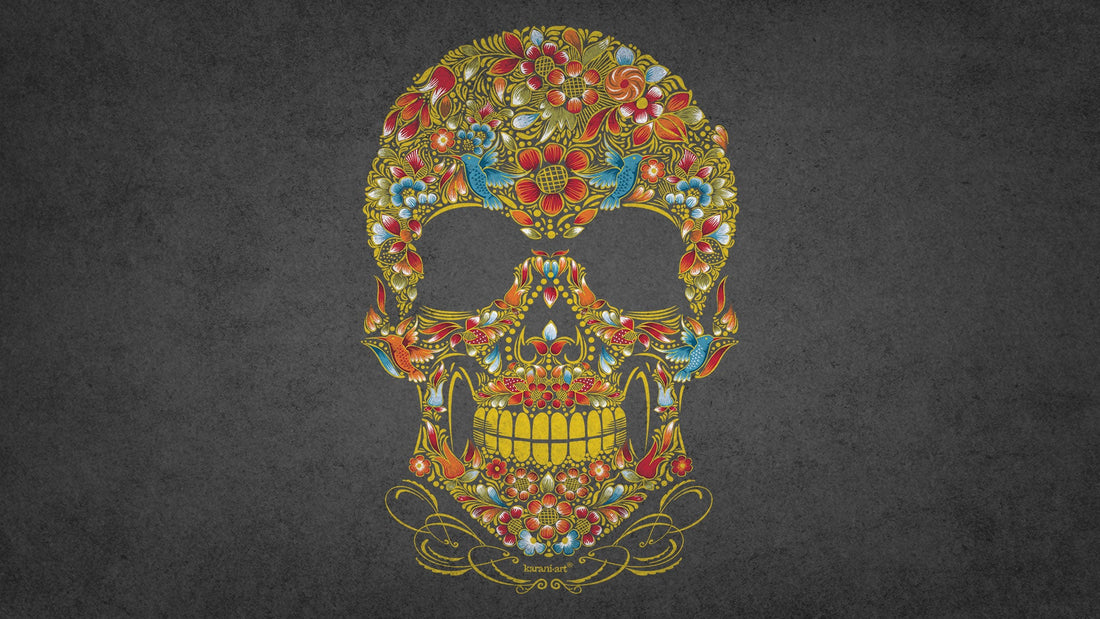The Legend of the Skull: The Guardian of Eternity

Share
The Skull: Guardian of Eternity and Symbol of the Mexican Life Cycle
At the heart of Mexican tradition , where life and death are intertwined in an eternal cycle , emerges La Calavera , revered as the Guardian of Eternity . This emblematic figure symbolizes the celebration of existence through mortality, reminding us that every end is a rebirth.
Vibrant Design: Traditional and Contemporary Art
La Calavera features an ornate skull with vibrant colors, marigold flowers, smaller skulls, and geometric motifs inspired by Day of the Dead altars . Every detail—from the floral patterns to the sacred symbols—pays homage to the connection between the living and the deceased , transforming death into a work of art that celebrates rebirth .
Golden Heart: Symbol of Eternal Life and Memory
In the center of her chest, a golden heart radiates a warm light, representing the enduring love and collective memory of her ancestors. Surrounded by floral elements , this heart guides the spirits during the Day of the Dead, illuminating the path between Mictlán and the earthly world.
Ancestral Legend: Shamanic Origin and Bridge between Worlds
According to tradition, La Calavera was born from a shamanic rite practiced by indigenous Mexican peoples . Invoking the forces of the afterlife , the sages created this entity as a bridge between realms, reminding humanity that death is not the end, but a spiritual transition.
Day of the Dead: Reconnection and Celebration
In folk tales, La Calavera appears during the Day of the Dead festivities, guiding the lost souls to their families. Their presence—dancing and singing among offerings and marigolds—fosters collective joy , replacing mourning with a celebration of life.
Cultural Significance: Eternal Cycle and Immortal Love
The Skull transcends as a symbol of duality : death as an inherent part of life. Its vibrant colors and elaborate design reflect respect for ancestors , emphasizing that love and memory keep loved ones alive.
